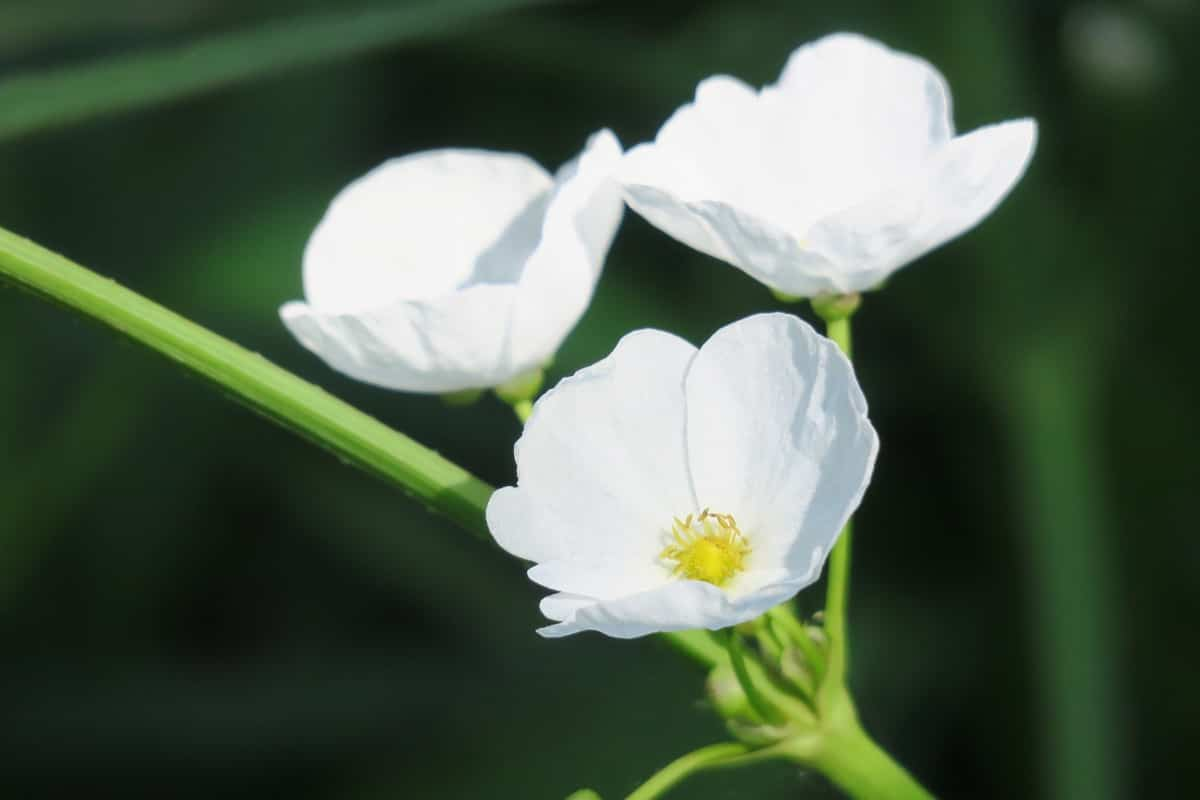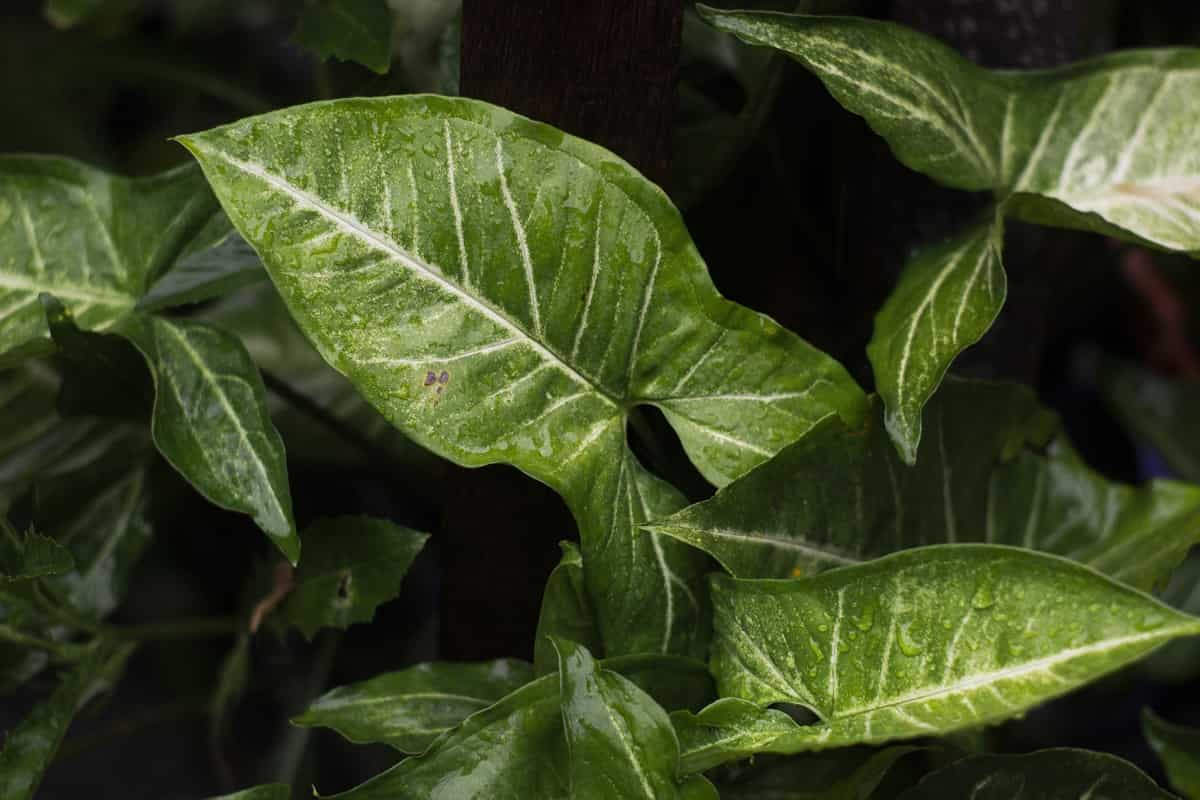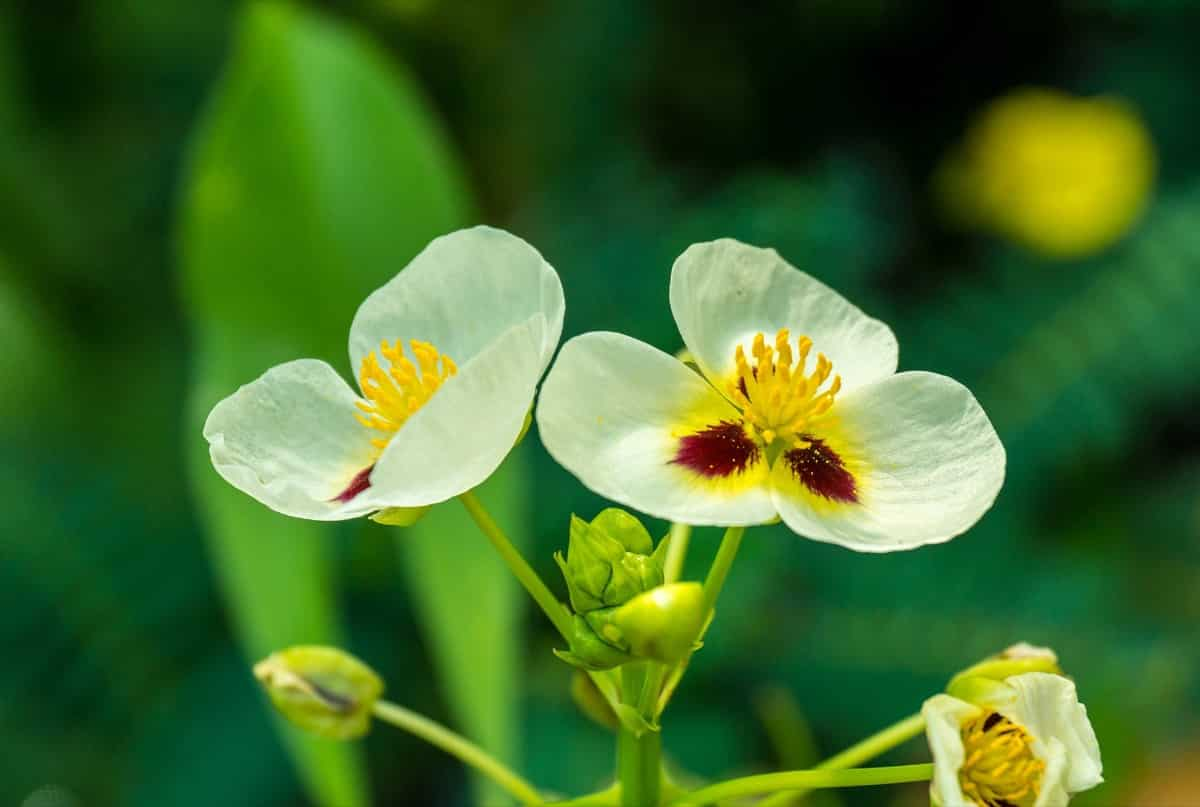The Arrowhead plants are known for their unique arrow-shaped leaves, which can vary in color from green to white. Arrowhead vines make an excellent addition to any home garden or landscape. They can be used as groundcover, climbers, or even houseplants. With their bright flowers and lush foliage, Arrowhead vines add a touch of tropical beauty to any setting.

An Arrowhead vine is a great option if you’re looking for a low-maintenance and beautiful plant. These vines are easy to care for and can thrive in various environments. Arrowhead vines make a dramatic statement in any space with their distinctive leaves and cascading growth habits.
How to grow and care for Arrowhead Vines indoors
Types of Arrowhead Vines
- Emerald Gem – Emerald gem is one of the most popular Arrowhead vines. This type has dark green leaves and a shiny, metallic appearance.
- Holly – Holly is a popular Arrowhead vine known for its glossy, dark green leaves. This vine is a fast grower and can quickly cover an area with its dense foliage. Holly Arrowhead vines are also tolerant of shady conditions, making them a good choice for areas that do not receive full sun.
- Painted Arrow – The leaves of this plant are arrow-shaped and have a glossy, dark green color. The flowers are white, and they grow in clusters. This plant prefers to grow in moist soil and shady areas.
- Trileaf Wonder – The Trileaf Wonder is an Arrowhead vine that gets its name from its three-lobed leaves. The Trileaf Wonder is a fast-growing vine known for its drought tolerance. The Trileaf Wonder is an evergreen vine that produces small, white flowers in the springtime.
- Green Gold – There are many different Arrowhead vines, but one of the most popular is the green gold Arrowhead vine. It gets its name from its beautiful, bright green leaves. The leaves of this vine are heart-shaped and can grow up to 12 inches long. The green gold Arrowhead vine is a fast-growing plant and is very easy to care for. It prefers humid conditions and does well in partial shade or full sun. It’s a great choice for beginners who want to try growing an Arrowhead vine, and it’s also a good choice for people who want to add some color to their gardens.
- Albovirens – Albovirens are a very popular type of Arrowhead vine. It is known for its beautiful white flowers that have a yellow center. This vine can be found in many colors, including green, purple, and red. It is a climbing plant that prefers to grow in moist, shady areas.
In case you missed it: How to Grow and Care for ZZ Plants Indoors: A Beginners Guide
Climate suitable for growing Arrowhead Vine
If you’re looking for a climate suitable for growing Arrowhead vines, you’ll want to find a location that offers plenty of sunlight and warmth. This plant thrives in humid conditions, so somewhere with high humidity levels would be ideal. Depending on the species of Arrowhead vine you’re growing, you may also need to consider whether the area experiences frost during winter.
If you live in an area with very hot summers, it’s best to provide some afternoon shade to prevent the leaves from burning. To successfully grow Arrowhead vines, it is important to provide the plant with plenty of sunlight. The best location for Arrowhead vine is in a spot with full sun for at least six hours daily. If you are growing Arrowhead vine indoors, place it near a south-facing window.
Soil requirement for growing Arrowhead Vine
Regarding Arrowhead vine soil requirements, this plant is not picky. They do almost well in all well-draining soils, including sandy or loamy soils. The pH level can range from 5.5 to 7.5. To successfully grow Arrowhead vine, your plant will need access to nutrient-rich soil. This can be achieved by planting in organic-rich soil or supplementing with compost or other organic matter. If your soil is dry, consider adding mulch to help retain moisture.
In case you missed it: How to Grow Lipstick Plants Indoors: A Beginners Guide

Water requirement for growing Arrowhead Vine
Arrowhead vines are native to tropical and subtropical regions and require a moist, humid environment to thrive. Arrowhead vines are easy to grow and care for, and they are very drought-tolerant. However, they do require some water to thrive. Arrowhead vines should be watered regularly during the growing season, especially when the weather is hot and dry. The best way to water an Arrowhead vine is to soak the soil around the plant deeply until the water penetrates several inches into the ground. Water your Arrowhead vine when the soil is dry.
Arrowhead vines prefer evenly moist soil, so check the moisture levels regularly and adjust your watering schedule accordingly. These plants are not tolerant of drought conditions and will begin to wilt if the soil is allowed to dry out completely. You may need to water your Arrowhead vine daily during the hotter months. If you live in a hot or dry climate, you may even need to mist your plant with a sprayer to raise its humidity levels. However, be sure not to over-water your plant, as this can lead to root rot.
Pot size required for growing Arrowhead Vine
To determine the pot size required for growing Arrowhead vine, it is necessary to consider the plant’s mature size. You should choose a pot with drainage holes in the bottom to prevent the Arrowhead vine from becoming waterlogged. The pot size you use to grow your Arrowhead vine will depend on a few factors, like the plant size and the soil type you are using.
If you are growing a large plant, you will need a bigger pot. You will need a smaller pot if you use light, sandy soil. A larger pot will allow the roots to spread out and the plant to grow more vigorously. It is also easier to keep a large plant watered and fertilized than a small one.
In case you missed it: Top 15 Indoor Garden Plants to Remove Air Toxins
Propagating Arrowhead Vine
From cuttings
Arrowhead vine is a famous houseplant because it can tolerate low light conditions. To propagate Arrowhead vine, you need a stem cutting at least 6 inches long. Cut just below a leaf node with a sharp knife or pruning shears. Dip the cutting in the rooting hormone powder or liquid, then place it in a moist perlite or sand container. Cover the container with plastic wrap or a lid to create a humid environment. Place the container in indirect sunlight and keep the perlite or sand moist but not soggy. Once roots are formed, transplant them into a pot or garden.
Arrowhead vine care
Fertilizer requirement for growing Arrowhead Vine
To ensure that your Arrowhead vine gets the nutrients it needs to thrive, you should fertilize it regularly. An all-purpose fertilizer will work fine, but you can also use a fertilizer specifically designed for vines. The perfect time to fertilize is in the spring, just as the plant begins to emerge from its dormancy.
Pruning Arrowhead Vine
Prune Arrowhead plants before new growth begin in late winter or early spring. To encourage a fuller, bushier plant, cut the main stems by one-third to one-half their length. Cut back side shoots that are longer than the main stems. It’s important not to over-prune Arrowhead plants. If you remove too much of the plant, it will be slow to recover and may not flower as abundantly.
In case you missed it: How to Start Indoor Vertical Garden with Stunning Spider Plants

The Arrowhead vine is a fast-growing plant that can quickly become overgrown and leggy. However, pruning the Arrowhead vine is relatively easy just cut back the stems to the desired length. If you prune too heavily, the plant may go into shock and lose some leaves.
Repotting Arrowhead plant
When it comes to repotting Arrowhead vine, the process is quite simple. First, remove the plant from its current pot. If the roots are pot-bound (i.e., growing in a circular pattern around the inside), it is time for a larger pot. The next step is choosing a new pot one size larger than the current one. Once you have selected a new pot, you must add fresh potting mix. When adding fresh potting mix, water it well so it is evenly moistened before adding your Arrowhead vine plant.
Once your new pot is filled with fresh potting mix, carefully place your Arrowhead vine plant into it. You may need to gently loosen some of the roots with your fingers to get the plant into the new pot without damaging it. After placing your Arrowhead vine plant into its new home, water it well and give it a few days to adjust before moving it back into its usual spot.
Arrowhead plant care in winter
This beautiful plant is native to tropical climates and doesn’t do well in cold temperatures. Arrowhead vine is a heat-loving plant, so it must be kept in a warm environment during the winter. The ideal temperature for Arrowhead vine care in winter is between 15 to 21°C. If your home is cooler, you can place your Arrowhead vine near a radiator or other heat source. Regarding watering, Arrowhead vines prefer less water in the winter. Let the soil dry completely between waterings, and don’t be tempted to fertilize too often once every month or two is plenty. Over-fertilizing can damage Arrowhead vines.
Pests and diseases of Arrowhead Vine and their control
Pests and diseases are common problems with Arrowhead plants. Aphids, whiteflies, and mealybugs are the most common pests that attack Arrowhead plants. Diseases that Arrowhead plants are susceptible to include root rot, powdery mildew, and leaf spot. To control root rot, water your Arrowhead plant only when the soil is dry. Also, avoid overhead watering, which can promote fungal growth.
Powdery mildew can affect Arrowhead vines. Powdery mildew weakens the plant and makes it susceptible to other diseases. To prevent powdery mildew, water the plant at the base rather than from above, and avoid wetting the leaves. Leaf spot is another common fungal disease that affects Arrowhead vines.
In case you missed it: Top 10 Pollution killer Plants: Indoors and Outdoors

Small, dark spots on the plant’s leaves characterize the leaf spot. To prevent leaf spot, water the plant at the base rather than from above, and avoid wetting the leaves. Aphids are small, winged insects that feed on plant sap. Aphids can cause stunted growth, curled leaves, and yellowing of plants. Whiteflies are small, winged insects that feed on plant sap. Whiteflies can cause stunted growth, curled leaves, and yellowing of plants. To prevent infestations of aphids or whiteflies, keep your plants clean and free of debris.
Conclusion
The Arrowhead vine is a beautiful, easy-to-care-for plant that adds beauty to any home. There are many different Arrowhead vines, each with unique features. However, all Arrowhead vines have one common thing: they are all beautiful plants that can add beauty to any home. With just a little water and light, it will thrive and provide you with beautiful foliage all year.
- Where to Place Indoor Plants in Your Home
- How to Grow Tomatoes Organically at Home: A Comprehensive Guide
- Organic Gardening on a Budget: Low-Cost Methods and Materials
- Gongura Seed Germination and Planting Methods
- Cabbage Seed Germination and Selection
- Broccoli Seed Germination and Selection
- Asparagus Seed Germination and Variety Selection
- Seasonal Flower Gardening: Best Practices for Spring, Summer, Fall, and Winter
- How to Grow Hibiscus from Flower
- Plantation Ideas for Home Decoration: A Beginners Guide
- Flower Garden Designs and Layouts for Beginners
- Planting and Spacing Techniques in Papaya: A Beginner’s Guide
- Growing Gold: Essential Techniques for Planting Pineapples
- How to Make Kalanchoe Plant Bushy: Home Remedies and Solutions
- 11 Reasons Why Your Gardenia is Not Blooming: Home Remedies and Solutions
- Eco Elegance: The Guide to Designing a Drought-Tolerant Landscape
- Gardening on a Slope: Strategies for Hillside Landscaping
- Nourish and Flourish: Top Organic Mulches for Thriving House Plants
- Everything You Want to Know about Indian Mogra Flower: Discover Uses and Growing
- Green Thumb Success: Expert Tips for Cultivating Greenhouse Pumpkins All Year Round
- Maximize Growth & Flavor: The Ultimate Guide to Companion Planting in Herb Gardens
- How to Control Rhododendron Problems Naturally: Home Remedies and Organic Ways to Fix Them
- Natural Magic: The Remarkable Benefits of Cinnamon for Plants
- Best Steps to Revive Dying Tulip with Natural and Organic Treatment
- 10 Reasons Why Your Angel Trumpet is Not Blooming: Remedies and Treatment
- How to Fix Periwinkle Leaf and Flower-Related Problems: Natural Remedies and Solutions
- How to Fix Zinnias Leaf and Flower Problems: Discover Natural and Home Remedies
- Organic Steps to Induce Lemon Tree Flowers: A Comprehensive Guide
- Bloom Booster: Crafting the Perfect Homemade Bougainvillea Fertilizer
- Optimizing Growth: A Guide to Applying NPK Fertilizer for Potted Plants
- 10 Best Homemade Fertilizers for Rubber Plant: DIY Recipes and Application Method
- How to Boost Female Pumpkin Flowers: Effective Steps for More Flowers and High Yields
- Transform Your Indoor Garden: Top Benefits of Pink Salt for Houseplants
- 10 Best Homemade Fertilizers for Peacock Plants (Calathea): Easy DIY Guide
- Unlock Blooms: 9 Reasons Why Your Potted Chrysanthemum is Not Blooming
- 8 Reasons Why Your Potted Hibiscus is Not Blooming: Fix it with Simple Solutions

